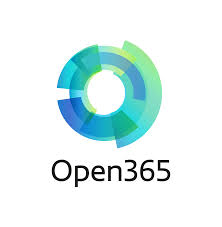Open365 — Open-Source Cloud Office and Collaboration Suite
General Information
Open365 was an attempt to bring together an entire office suite, email, storage, and collaboration into a single open-source package. It combined LibreOffice Online, KDE Kontact, and cloud storage to give users a self-hosted alternative to Google Workspace or Microsoft 365. For a while it drew a lot of attention because it promised a “drop-in” office and mail environment that could run on Linux servers without vendor lock-in.
Even though development slowed compared to mainstream suites, Open365 is still used in certain labs and community projects where keeping documents, email, and collaboration tools under local control is more important than polished SaaS features.
How It Works
At its core, Open365 runs on top of Linux with Docker containers that hold different services. LibreOffice Online handles document editing (Writer, Calc, Impress). Kontact provides email, calendar, and contacts. Files are stored in the cloud backend with desktop sync clients, similar to Nextcloud or Dropbox.
Users connect through a web portal: mail, documents, and storage are all presented in one interface. Authentication can be integrated with LDAP or kept local. TLS is handled by the reverse proxy, and mail transport relies on standard SMTP/IMAP servers behind the suite.
Functions
| Feature | In practice |
| Platforms | Linux servers; web clients; desktop sync apps |
| Office suite | LibreOffice Online (Writer, Calc, Impress) for docs, sheets, presentations |
| Mail & PIM | KDE Kontact for email, calendar, contacts |
| File storage | Integrated cloud drive with sync clients |
| Collaboration | Real-time editing, sharing, commenting |
| Security | TLS, user authentication, LDAP/AD integration |
| Deployment | Packaged in Docker containers for quick setup |
| License | Open source (AGPL/GPL components) |
Installation Guide
1. Prepare a Linux server with Docker and Docker Compose.
2. Download the Open365 containers from the official repository.
3. Start the containers: LibreOffice Online, Kontact, file storage backend, proxy.
4. Configure domains and mail routing (Postfix/Dovecot).
5. Enable TLS via Let’s Encrypt or custom certs.
6. Connect desktop sync clients and test document editing in browsers.
Since the project is not actively updated, many admins apply manual patches or use forks that keep containers current.
Everyday Use
– Schools and universities experimented with it to provide students with free access to online editing and mail.
– Community labs use it for collaborative editing where SaaS is not an option.
– Small organizations deploy it as a private alternative to Google Docs, especially when they already rely on Linux infrastructure.
Users open documents in a browser, send mail through the same portal, and sync files with desktop clients. The experience feels familiar, though not as polished as commercial suites.
Limitations
– Development has slowed, so updates and bug fixes are sparse.
– Document editing works but is less smooth than Google Docs or Microsoft Office Online.
– Docker-based setup is convenient but can be heavy on RAM and CPU.
– Smaller ecosystem and fewer integrations compared to Nextcloud or Zimbra.
Comparison
| Tool | Platforms | Strengths | Best Fit |
| Open365 | Linux + web clients | All-in-one open-source suite (mail + docs + storage) | Schools, labs, small orgs avoiding SaaS |
| Nextcloud + Collabora | Linux + clients | Active community, modular apps | Teams needing ongoing support and plugins |
| Zimbra OSE | Multi-platform | Mature mail + groupware | Enterprises, education |
| Microsoft 365 | SaaS | Deep integration, Office apps, Teams | Large corporates |
| Google Workspace | SaaS | Seamless online editing and collab | SaaS-first companies |
Notes from the Field
Admins who tested Open365 liked the “all-in-one” idea, but many ended up moving to Nextcloud + Collabora for longer-term stability. A common comment is that the platform works, but it feels more like a proof of concept than a polished product. Still, for labs, classrooms, and NGOs, it offered a rare chance to run a full cloud office stack on their own hardware.

